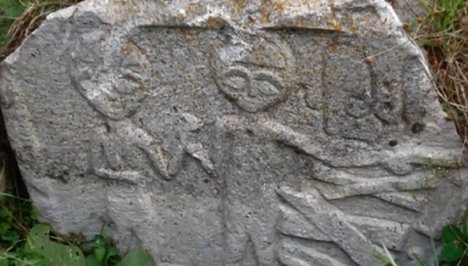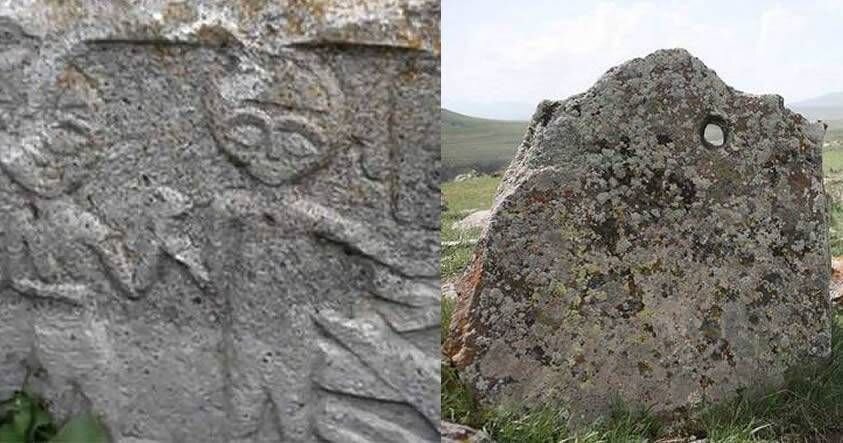A fascinating revelation emerged in the spring of 2019 from the depths of Zorats Karer, an ancient site nestled in Armenia’s historical landscape. Amidst the ancient remnants, archaeologists stumbled upon an extraordinary find—a weathered stone relief dating back more than 7,500 years. This relic portrayed a perplexing and enigmatic symbol, triggering a wave of curiosity among researchers and historians.

Zorats Karer, often hailed as the Armenian Stonehenge due to its resemblance to the renowned British site, comprises concentrically arranged standing stones, some towering above 3 meters in height. This archaeological complex in the southern province of Syunik has long been a site of intrigue, drawing parallels to the mysteries of its British counterpart.

The newly discovered stone relief at Zorats Karer presents an emblem that bears resemblance to a radiant sun, with rays extending outward. Surrounding this central motif are a series of smaller formations resembling cup-marks. The interpretation of this symbol remains shrouded in uncertainty, fueling ongoing debate among experts.

Numerous hypotheses have surfaced regarding its potential significance. One school of thought suggests an astronomical or cosmological association, wherein the sun symbolizes a celestial force, while the encircling cup-marks might signify stars or cosmic entities. Alternatively, theories speculate religious or ritualistic connotations, possibly depicting a deity or mythological entity. There’s also speculation about the symbol being an early form of script, with the cup-marks indicative of a symbolic language.

Regardless of its meaning, the discovery of this stone relief stands as a pivotal milestone. It serves as a portal into the enigmatic world of our prehistoric ancestors, emphasizing the vast gaps in our understanding of early human civilizations. Zorats Karer’s ancient whispers remind us of the infinite narratives concealed beneath the earth’s surface, awaiting revelation—a testament to the inexhaustible troves of wisdom and history that lie hidden in sites of antiquity.





